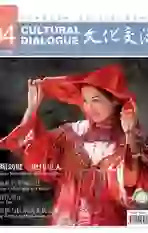汪曾祺与杭州的美食记忆
2020-04-20孙雯
孙雯



汪曾祺赠予担任其《晚翠文谈》终审的徐正纶先生的诗中曾提到:“桃柳杭州无恙否,当年风物尚如初。虎跑泉泡新龙井,楼外楼中带把鱼。”
这个春天,是汪曾祺先生百年诞辰。
他曾写过一首诗,其中有一句:写作颇勤快,人间送小温。
所以,他的文字是适合春日阅读的。有生机却不喧闹,这就是小温。
汪曾祺的一生,并未在杭州有过长久的驻足。1946年秋,26岁的他到上海,经友人介绍,在上海民办致远中学当教师,至1948年春离开,这两年应该是他离杭州最近的时光。
虎跑喝了一杯“好茶”
我写文章的这几天,正值龙井开摘,那么就从汪曾祺先生的一杯茶说起吧。
他说,自己曾在杭州喝过一杯好茶。那是1947年的春天,汪曾祺和几位同事一起到杭州游玩。
那一杯“好茶”是在虎跑喝的龙井。汪曾祺在散文《寻常茶话》中写道——
真正的狮峰龙井雨前新芽,每蕾皆一旗一枪,泡在玻璃杯里,茶叶皆直立不倒,载浮载沉,茶色颇淡,但入口香浓,直透脏腑,真是好茶!只是太贵了。一杯茶,一块大洋,比吃一顿饭还贵。狮峰茶名不虚传,但不得虎跑水不可能有这样的味道。我自此方知道,喝茶,水是至关重要的。
如果不说西湖美景,这趟杭州之行让汪曾祺难忘的除了这杯龙井茶,还有楼外楼的“醋鱼带把”,这是一道名菜。
所谓“带把”,是把活草鱼的脊肉剔下来,快刀切为薄片,其薄如纸,浇上好秋油,生吃。鱼肉发甜,鲜脆无比。我想这就是中国古代的“切脍”。
其实,这道菜不单好吃,汪曾祺还认为,它是与中国古代饮食文化中频频出现的“脍”最为切近。为此,他专门写过一篇《切脍》。
中国的“切脍”始于何时?没有答案。但是无论成书于战国的《论语》、北魏贾思勰的《齐民要术》,还是唐代大诗人杜甫的诗歌,都提到过。
“切脍”之风,宋代风行,并延续至元明。看起来,“切脍”在中国古代非常流行。但汪曾祺注意到,《金瓶梅》与《红楼梦》都没有提到它。
“脍”是什么?从古人的文字中可以看出,它类似于今天的鱼生、肉生。汪曾祺说,更多是指鱼生,因为脍的繁体字是“鲙”。
写下《切脍》之时,汪曾祺依然遗憾着——切脍今无实物可验。而近乎切脍的杭州楼外楼“醋鱼带把”,当时也没有了。
这两样杭州的春日好物,是永久停驻于汪曾祺内心的。
1991年,汪曾祺赠予担任其《晚翠文谈》终审的徐正纶先生的诗中,就提到它们——“桃柳杭州无恙否,当年风物尚如初。虎跑泉泡新龙井,楼外楼中带把鱼。”
难忘知味观的“炸响铃”
想来,那时的上海游客与今天一样,总会在周末选择到杭州偷个小闲。
1948年春天,汪曾祺又来杭州了,又去吃了楼外楼。
这次春游,他在楼外楼喝了莼菜汤。在此之前,他没有见过,更没有吃过莼菜。而他的家乡高邮,也几乎没有人知道莼菜为何物。
不过,从秦少游的《以莼姜法鱼糟蟹寄子瞻》一诗,汪曾祺知道高邮原来是有莼菜的,大概还是颇有特色的地方土产,居于高邮的秦少游,曾把它赠予苏东坡。
汪曾祺点名过的杭州馆子,还有知味观。
这里有一道他最难忘的名菜“炸响铃”,而且,他在《豆腐》一文中详细介绍了这道菜的做法和口感——
豆腐皮(),瘦肉剁成细馅,加葱花细姜末,入盐,把肉馅包在豆腐皮内,成一卷,用刀剁成寸许长的小段,下油锅炸得馅熟皮酥,即可捞岀。油温不可太高,太高豆皮易糊。这菜嚼起来发脆响,形略似铃,故名响铃。做法其实并不复杂。肉剁极碎,成泥状(),平摊在豆腐皮上,折叠起来,如小钱包大,入油炸,亦佳。不入油炸,而以酱油冬菇汤煮,豆皮层中有汁甚美。
不知道今天的知味观大厨是否还沿用这样的做法。看起来不难,只是得注意火候,闲居的小伙伴不妨试试。
还得说说野菜。这也是汪曾祺文字中送来的“小温”,与这个季节,恰好合拍。
比如荠菜。
最好的吃法,是凉拌。
荠菜焯过,碎切,和香干细丁同拌,加姜米,浇以麻油酱醋,或用虾米,或不用,均可。这道菜常抟成宝塔形,临吃推倒,拌匀。和凉拌马兰头的做法一样。
不过,杭州的茶园和花圃间,似乎不大见肥嫩的荠菜,等你发现它时,已经抽了清瘦的薹,老了。
餐馆可以吃到荠菜馄饨——和汪曾祺所见的江南吃法一样。他说:荠菜可包春卷,包圆子()。江南人用荠菜包馄饨,称为菜肉馄饨,亦称“大馄饨”。
还有枸杞头。也是凉拌。汪曾祺说:清香尤甚于荠菜。
我家陽台上有一小株枸杞。三四年前从山东老家带来,只要不是冬天,它总是茂盛地抽一波芽儿,叶子随风呼啦啦地长。无奈,它大概受不得杭州的阴湿,随后就蔫掉了,而后再重复这个萌发与凋谢的过程。
那天,见它的芽长到正好,我就用汪曾祺的方法——把它凉拌了。味道还成。
他眼中清淡的宋朝饮食
汪曾祺生前,对吃的普及非常热心。
比如,某次他排队买牛肉,排在他前面的是一位中年女性,轮到她时,她问卖牛肉的:“牛肉怎么做?”原来,这位南方知识女性家里从来不吃牛肉,但孩子们长大了会到外地去,做母亲的觉得应该让他们习惯习惯外面的味道。
于是,汪曾祺将她请到一边,讲了一通牛肉的做法——“从清炖、红烧、咖喱牛肉,直到广东的蚝油炒牛肉、四川的水煮牛肉、干煸牛肉丝……”
他把这段往事,留在了《吃食与文学》里。当然,他也把无数菜式的做法的蕴味留在了书中,读到它,试着做一做,也是今人对他最好的怀念。
汪曾祺对于杭州美食的关注,不仅仅对于当时,还有对历史的深读。
他说,宋朝人——当然包括南宋时的杭州人,饮食简单而清淡。
如何簡单清淡?先说说皇帝吧。“御宴有定制,每一盏酒都要有歌舞杂技,似乎这是主要的,吃喝在其次。”御宴的菜式,在《东京梦华录》上有详细记载,反正在汪曾祺眼里——如此而已。
而市面上流行的吃食,似乎比较便宜,且多是快餐,汤水是早早备好的,各种肉类也是提前煮好的,面食的种类则非常多,汪曾祺提到的饼就有——门油、菊花、宽焦、侧厚、油锅、髓饼、新样满麻……
这样一来,方便极了。客人来访,那就盛上来,切上来,端上来吧。
宋朝人的饮食生活应该是相对比较克制的,汪曾祺在《宋朝人的吃喝》中写到,他翻遍了《东京梦华录》《都城纪胜》《西湖老人繁盛录》《武林旧事》,都没有发现那时的人有吃海参、鱼翅、燕窝的记录,“这类的吃食要从明朝才开始”。
也许应该这样说,那时杭州人在饮食上的高级,应该体现在其他方面,比如,实行“分食制”,饭菜每人一份,讲究又卫生,而且多用银餐具。
那么问题来了,即使饭菜简单,但餐具繁多,算起来,一顿饭也不便宜啊。
(图片由人民文学出版社提供)
Wang Zengqi and Delicacies of Hangzhou
By Sun Wen
The year 2020 celebrates the 100th anniversary of the birthday of Wang Zengqi (1920-1997), a prominent essayist, short story writer, playwright, and gourmet. For many readers, Wang was an outstanding gourmet and food writer and whenever the name of Wang Zengqi is mentioned, his delightful obsession with food and his essays about food and food-related anecdotes first come to mind. In comparison, not so many people are aware that Wang was an outstanding essayist, short story writer, and playwright.
In his lifetime, he visited Hangzhou only twice. From 1946 to 1948 he taught at a middle school in Shanghai.
In the spring of 1947 he and some colleagues came to Hangzhou for sightseeing. In an essay about tea, he mentioned he sipped tea at Tiger Spring, a scenic spot near the West Lake. It is widely known that the water from Tiger Spring is the best water to brew a cup of Dragon Well tea. Thats probably why he acknowledged in the essay that it was the first time he became aware of the importance of spring water used to make a cup of tea. During his brief two visits, Louwailou was the restaurant he chose to satisfy his curiosity and passion for the famous Hangzhou cuisine.
Over years, he wrote essays about food in Jiangnan in general and about the dishes he had at Louwailou in particular. One delicacy that fascinated Wang was very thin slices of fresh raw fish at Louwailou Restaurant on the West Lake. As a gourmet and food historian, Wang once compared, in an essay, the raw fish slices he had at Louwailou with minced fish mentioned in history and ancient literary classics. The delicacy mentioned in ancient literature is long gone in history. Wang deduced the raw fish of Louwailou was very close to the lost delicacy. Unfortunately, the raw fish has long since vanished from the menu of Louwailou though, from texts of the past, foodies and food historians know exactly what the dish is.
Wang Zengqi knew quite a lot about the culinary preferences of the Northern Song Dynasty (960-1127) in general and the Southern Song (1127-1279) in particular. In an essay about the food and beverage of the Song Dynasty, he mentioned that some luxuries such as sea cucumber, shark fin and swallow nest which became popular in the Ming Dynasty (1368-1644) were not seen in well known books written about the Song Dynasty. According to Wang, restaurants in the Song preferred simple food and convenient service. A lot of dishes were prepared in advance and they were easily served. Moreover, court banquets were also relatively simple, for at such banquets, entertainment was most important and food and beverage were only secondary. After examining historical records, Wang Zengqi dismissed the menu of such court banquets was just so so. That doesnt mean, however, that people in Hangzhou ate at a low level. Back then, local restaurants served customers individually just as in restaurants in western countries of today. In other words, eaters at restaurants in Hangzhou back then did not share food.
If one reads food essays written by Wang, one can easily run into detailed descriptions of delicacies popular in Jiangnan, namely, the south of the Yangtze River Delta. For those who love life and love food, Wang is a writer who makes life and food better.
